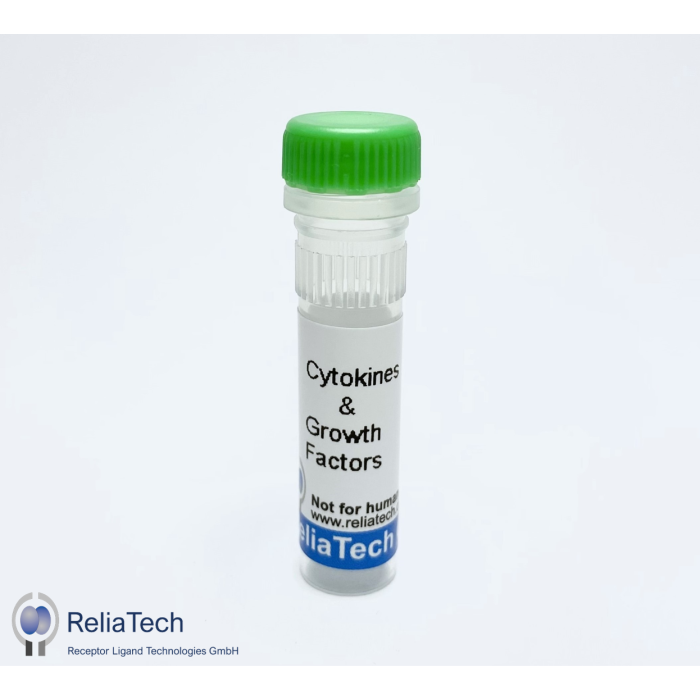Description / human NAP-2 (CXCL7) protein
NAP-2 is a CXC chemokine that can signal through the CXCR1 and CXCR2 receptors. It is produced in leukocytes by enzymatic processing of a precursor called platelet basic protein (PBP). NAP-2 chemoattracts and activates neutrophils. Recombinant human NAP-2 protein is a 7.6 kDa protein containing 70 amino acid residues including the four highly conserved cysteine residues present in CXC chemokines, and also including the ELR motif common to CXC chemokines that bind to CXCR1 and CXCR2.
More Information
| Size | 10 µg |
|---|---|
| Source | E. coli |
| Biological Activity | Determined by its ability to chemoattract human neutrophils using a concentration range of 1.0-10.0 ng/ml. |
| Purity Confirmation | > 98% by SDS-PAGE & HPLC analysis |
| Length [aa] | 70 |
| Molecular Weight | 7.6 kDa |
| Species Reactivity | Hamster, Human, Mouse |
| Formulation | lyophilized |
| Protein Sequence | AELRCMCIKT TSGIHPKNIQ SLEVIGKGTH CNQVEVIATL KDGRKICLDP DAPRIKKIVQ KKLAGDESA |
| Synonyms | CXCL7, NAP1L4; NAP2; NAP2L; hNAP2; NAP1L4b |
| Uniprot ID | P02775 |
| Protein RefSeq | NP_002695.1 |
| mRNA RefSeq | NM_002704.3 |

